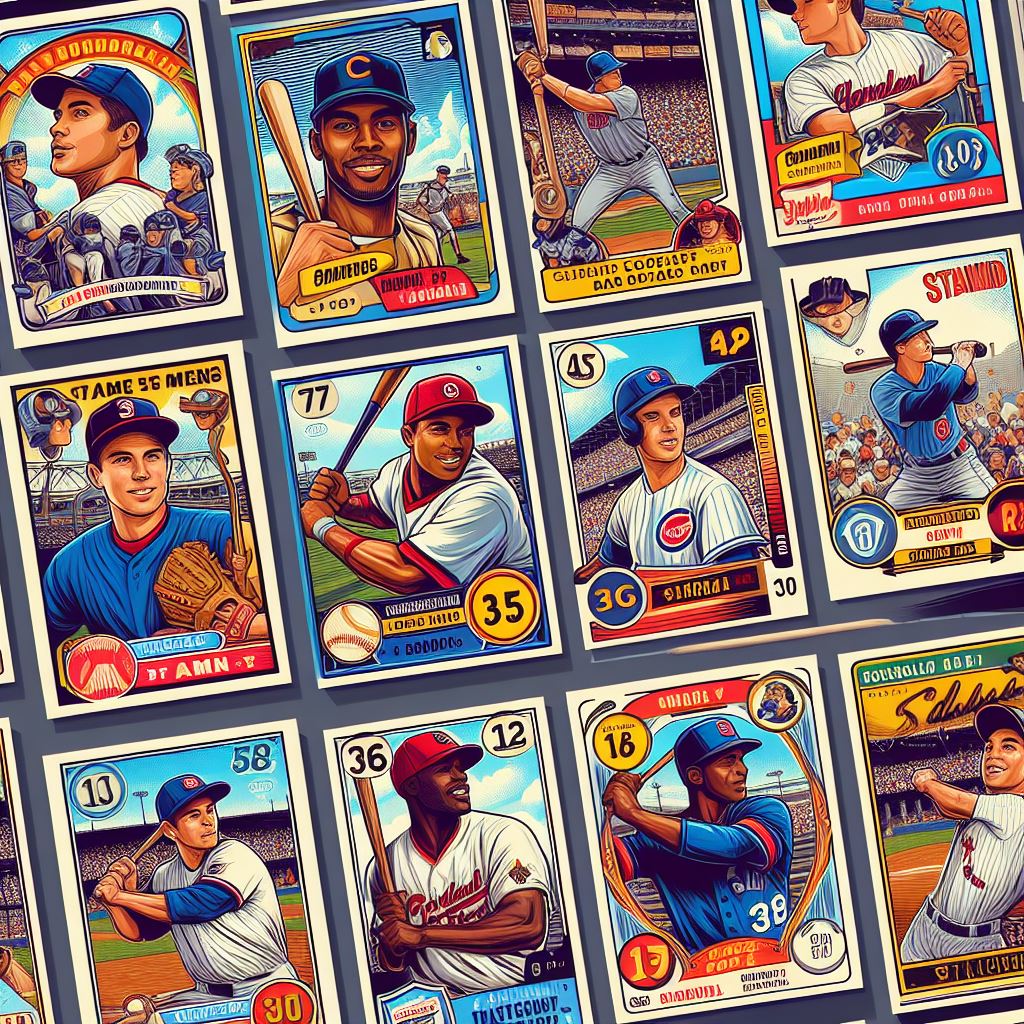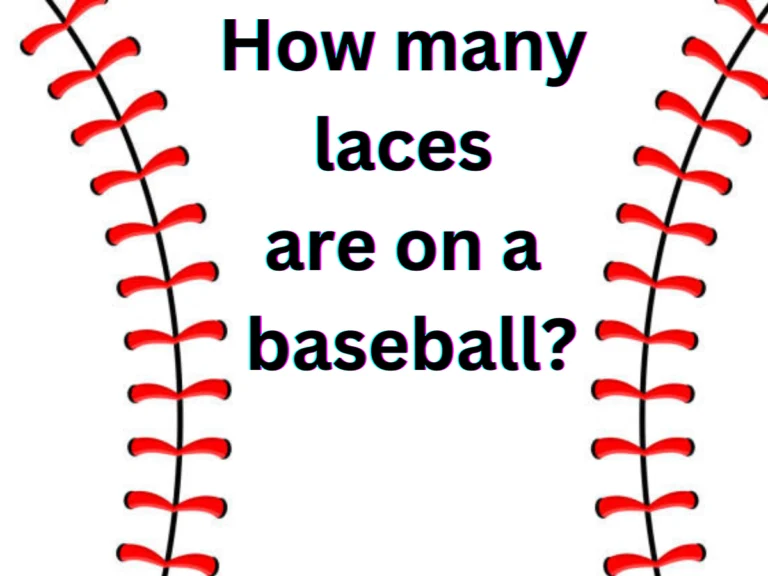What Size is a Baseball Card – Exploring Baseball Card Sizes
What Size is a Baseball Card ‘Baseball cards have long been more than just sports memorabilia they hold a nostalgic appeal for many and are a significant part of American culture.
For collectors, the size of a baseball card can be as important as the player featured on it, impacting the way they’re stored, displayed, and valued.
In this comprehensive blog post, we’ll closely examine the various sizes in which baseball cards are created and the implications of these dimensions on the hobby.

What Size is a Baseball Card
In Baseball, there are so many types of Card sizes and some sizes we mention in this blog with full details are 2.5 inches by 3.5 inches,5 inches by 7 inches, and 8.5 inches by 11 inches, let’s dive into each one with Full details :
Standard Baseball Card Size
The standard size for a baseball card is 2.5 inches by 3.5 inches, which has been the industry standard since the early 1900s. This site was initially chosen because it fits easily into cigarette packs, where many of the first baseball cards were distributed.
Even after baseball cards moved away from being included in cigarette packs, this size became the standard still used today.
Larger Sizes
In addition to the standard size, various larger sizes of baseball cards have been created over the years. These include:
- 3 inches by 4 inches – This was a popular size in the 1950s and early 1960s, with Topps producing their cards in this dimension.
- 5 inches by 7 inches – These oversized cards were typically used for promotional purposes, such as team giveaways or magazine inserts.
- 8.5 inches by 11 inches – These jumbo-sized cards were mainly used for novelty items or limited edition sets, often featuring multiple players on one card.
Smaller Sizes
Similarly, smaller baseball cards have also been created, although these are rare. Some examples include:
- Mini Cards – Measuring around 1 inch by 2 inches, mini cards were often included as inserts in packs or sold as a separate set.
- Micro Cards – These tiny baseball cards measure only 3/4 of an inch by 1/2 and were usually used for novelty.
- Stamp-sized Cards – As the name suggests, these cards were designed to be the size of a postage stamp, measuring around 1 inch by 1.5 inches.
The Impact of Size on Collectors

Baseball card collectors often have strong preferences when it comes to card sizes. Some prefer standard-sized cards for easy storage and display options, while others prefer.
Dimensions
Traditionally, a standard baseball card is 2.5 inches by 3.5 inches, with a portrait orientation and a slightly glossy finish. While these measurements have become the default for card collectors, especially trading baseball cards, there are other sites you’ll come across.
Evolution Over Time
An exciting facet of baseball card history is the evolution of the standard size. Early issues from the 19th century varied in dimensions, but they eventually converged to the 2.5 x 3.5 measurements by the 1950s the standard size that remains popular today.
The shift towards standardization reflected the growing popularity of card trading and the need for consistency in the marketplace.
How much is a Michael Jordan baseball card worth?
Variations in Baseball Card Sizes
Variations of baseball cards are of different sizes: mini cards, oversized cards, and jumbo cards, so let’s talk about each one.
Mini Cards
In contrast to standard cards, mini cards are a reduced-size version, often half or even one-quarter the size of a standard card. They were introduced as a novelty but quickly became popular among collectors due to their unique feel and space-saving qualities. Mini cards are commonly released as subsets within standard-sized sets and have become collectibles in their own right.
Oversized Cards
At the other end of the spectrum, oversized cards much larger than the standard offer a broader canvas for artistically designed cards, common in specialty releases and collector’s editions. These can sometimes be double the size of a standard card and are often more challenging to store and display.
Jumbo Cards
In recent years, jumbo-sized cards have made a significant impact. These cards are significantly larger than standard cards and are often used to commemorate special events or significant sports achievements.
Their size allows for detailed statistics, graphics, and content that may not fit on a traditional-sized card.
Collecting and Displaying Baseball Cards

As the size of a baseball card can be a determining factor for many collectors, it’s essential to consider storage and display options when building your collection. Many collectors prefer to store cards in protective sleeves or top-loaders and keep them in binders or designated boxes sorted by player, team, or year.
Others opt for more creative methods, such as framing individual cards.
Storage Options
Understanding the different card sizes is essential for those who want to keep their collections organized and in pristine condition. Storage solutions are available, from standard-sized top-loaders and penny sleeves to specially designed mini card albums and holders. Collectors must proactively choose the correct storage for each unique card size to avoid damage and maintain value.
Display Methods
Displaying your collection can be as much a part of the hobby as collecting itself. For standard baseball cards, display options range from simple binder pages to more ornate frames and shadow boxes. As for oversized and jumbo cards, many collectors opt for custom frames that can effectively protect and showcase these pieces.
Cards Sizes Impact on Value

The size of a baseball card can impact its value in several ways. First, scarcity plays a significant role mini cards are often more limited in production than standard-sized cards and, therefore, more valuable to collectors. Oversized and jumbo cards, on the other hand, may be considered less desirable due to their unusual dimensions and costlier storage requirements.
Rarity and Size Correlation
The size of a baseball card can significantly influence its perceived rarity, which can affect its value. Oversized and jumbo cards are typically rarer due to their limited production runs, and if paired with famous players or events, they can command higher prices on the secondary market.
Market Trends
Understanding how size affects value is essential for buying or selling baseball cards. With the help of online marketplaces and community forums, collectors can keep abreast of the latest trends and pricing strategies in response to the sizes available.
What Is A Showcase for Baseball
Conclusion
Baseball card sizes are as diverse as the collections they house. By recognizing the standard size, appreciating the novelty of minis, the grandeur of oversized cards, and the impact of jumbos on the market, collectors can enrich their understanding of their cards’ physicality and broader roles within this beloved hobby.
Whether you’re new to the collecting game or a seasoned card connoisseur, appreciating the different dimensions of baseball cards is vital to a richer collecting experience.
For any enthusiast, recognizing the dimensions of each card in their collection and the stories they tell through size will deepen their appreciation for this time-honored pastime. After all, the size of baseball cards is just as integral to their narrative as the players on the front.







Simply wish to say your article is as amazing The clearness in your post is just nice and i could assume youre an expert on this subject Well with your permission let me to grab your feed to keep updated with forthcoming post Thanks a million and please carry on the gratifying work